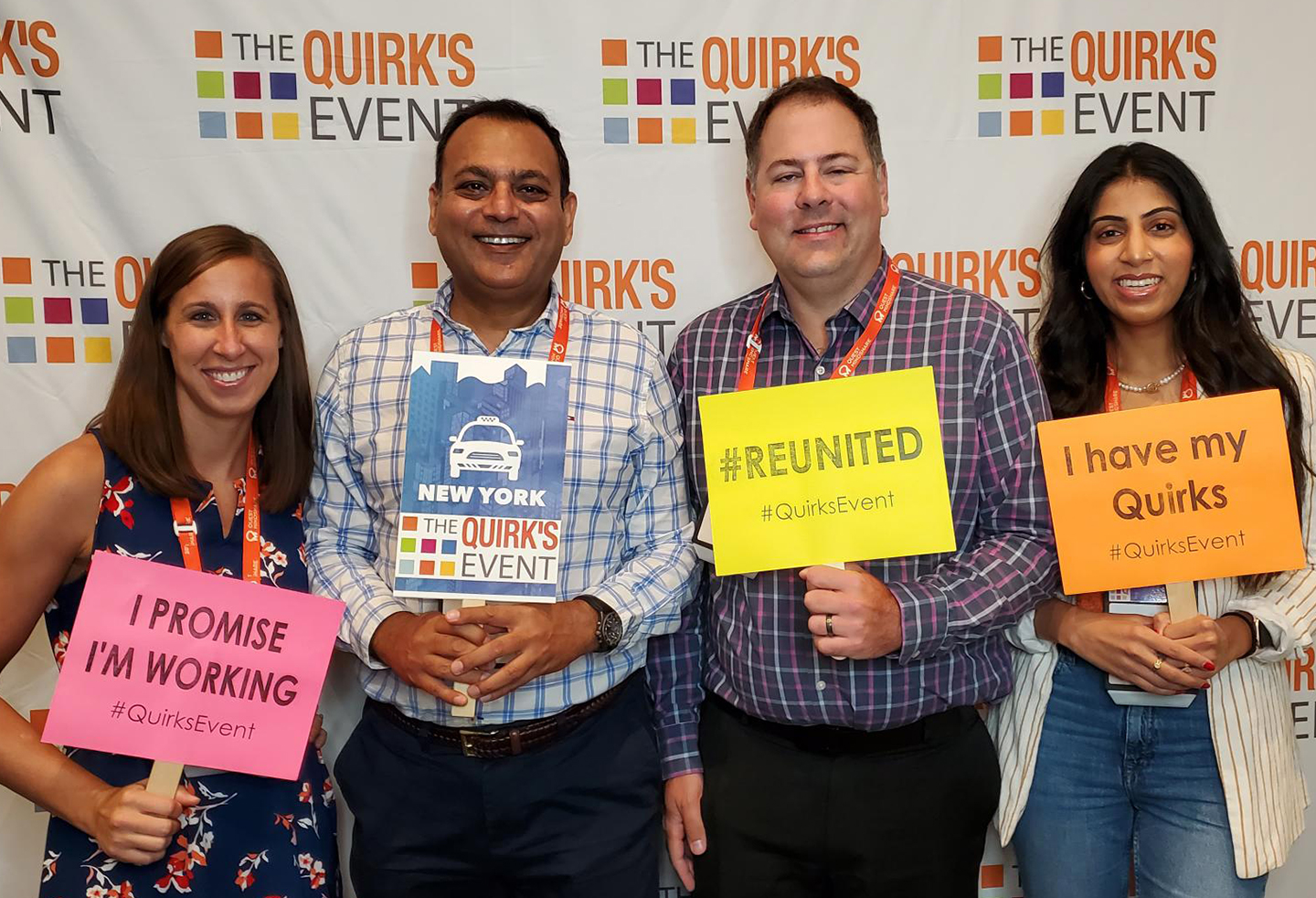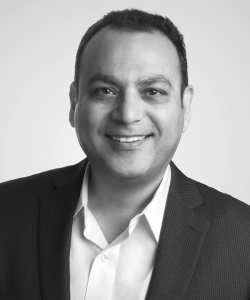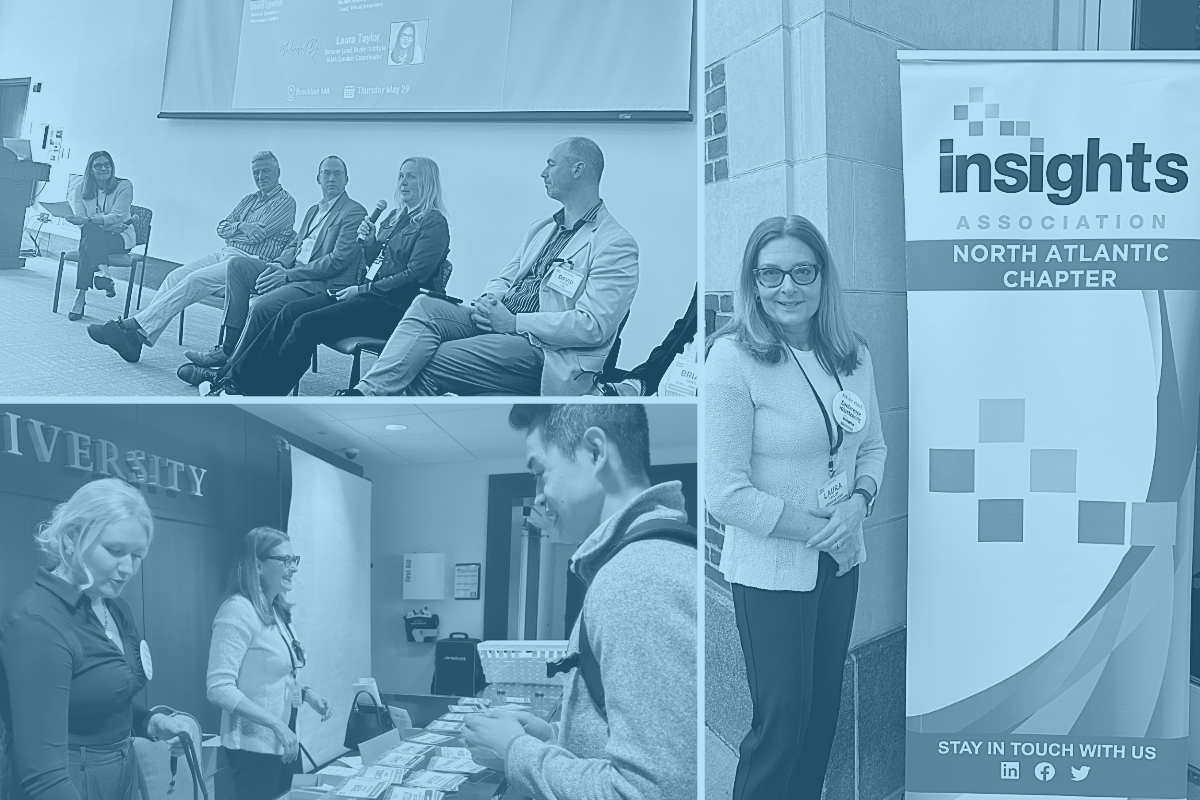
Top Takeaways From Quirk’s New York
Recently, our team joined their marketing research and insights peers in the Big Apple at the sold-out Quirks New York Event. Despite the intense heat wave that took over the city, the Javits Center was home to many cool presentations and provided ample opportunities to reconnect with fellow researchers. Here are a few of the team’s favorite moments from the event and their take on some of the industry’s trends:
Trend Immersion and Activation, Easier Said than Done - Lori Noel
To say I was impressed by the Tillamook Trends Framework Katie Petri shared would be an understatement—I was blown away by the simple, yet sophisticated, approach the company takes to identify and activate against trends in the marketplace. The premise of the framework is straightforward: identify the trends, educate stakeholders about the trends, and then activate against them. This sounds easy, right? Well, I can tell you from my own experience that it is not as easy as it sounds—or as Tillamook makes it seem.
It takes time to identify trends in the marketplace, not to mention a keen eye to distinguish trends from fads. However, Tillamook has brilliantly identified longer-term trends (such as the proliferation of plant-based foods) that will have a sustained impact on their industry, rather than just short-term blips in consumer behavior. This differentiation is critical to success; activating against a trend takes time and resources, which shouldn’t be wasted by chasing fads.
Once identified, trends are then socialized with key internal stakeholders in a strategically-orchestrated, immersive way. The Tillamook team planned workshops and activities to immerse their team in the trends, as well as energize them in a way that promotes activation. This unique, engaging way of socializing their framework helps to ensure activation, ultimately leading to their substantial growth over the past several years. What started out as a cheese company has now expanded into several adjacent categories successfully, including yogurt, cream cheese, sour cream, and a category with a special place in my heart: ice cream! This impressive growth is a testament to the hard work their consumer and market insights department (along with a host of others, I’m sure) put into creating and activating against their Trends Framework.
Given Tillamook’s innovative approach to insights and strategic activation, I’m looking forward to seeing what they come up with next. In the meantime, I’ll be tapping into my love of ice cream and taking a trip to the Tillamook Creamery. Did you know that the Tillamook Creamery typically has 1.3 million visitors a year? Fun fact – that’s the same number of visitors as the Seattle Space Needle!
Zen and the Art of Agile Research – Fred Gaudios
Fast, less expensive, and more efficient research is the expectation these days. But, traditionally, agile methodologies often lack a human component. Several sessions at the event focused on how AI and text analytics are filling this gap—giving marketers the ability to connect quick research with rich context from a multitude of sources, including social intelligence.
Over the course of the event, I sensed general satisfaction with agile research and existing technological solutions. However, there was also a sense of making agile insights impactful without sacrificing quality storytelling. One noteworthy session from the event was from a partner data collection company and focused on how humanity’s ability to change can guide the evolution of insights. This session provided a historical and anthropological view of how technology and insights can partner together to create a refined set of agile solutions.
While I walked away with the idea that in order to be agile, new technology is needed, I will say the inverse is also true—there is not a way to be agile if we don’t consider new technology as a partner. As a whole, our company has focused efforts on this, too, offering new and innovative agile solutions focused on quick-turn insights and accelerated innovation to better help clients bring ideas to life and tell an impactful story as quickly as possible. For instance, our unique agile sampling approach ensures high-quality data without trading off important quality assurance steps (e.g., sample balancing, respondent monitoring, survey validation checks) even though there is an accelerated timeline. On the analysis side, as well, we’ve doubled our efforts using the latest technology in order to streamline data tabulation and ultimately further accelerate deliverables.
Next Gen Qual-Quant Research – Sandip Narang
The prevalence of Quantitative Research merging with Qualitative Research was apparent, with many brands and marketers using this methodology to answer the “why” along with the “how many” in the same research phase. The prevalence of AI-based technologies has made it easier for companies to apply text analytics to the qualitative findings, conduct chat-based question probing that uses AI as a moderator, and apply agile principles to conduct large volumes of such conversations. In fact, over the years, we have seen clients leverage a trifecta of techniques—from combining qual/quant methodologies, to utilizing AI in text analytics across multiple data sources, to deploying more flexible and agile tools in their research plan—all to uncover the richest consumer insights. Burke has helped multiple clients utilize AI and Machine Learning to glean insights from survey-based, operational, and text-based data. This multi-pronged approach has helped companies effectively answer the “who, what, why, and how many” type research questions quickly. Multi-phase work has been reduced to single-phase timing. For instance, Burke’s Geode|AI™—our AI and Machine Learning tool—transforms a diverse spectrum of quant and qual/text-based elements into an object of singular clarity helping clients move forward quicker.
Bringing the Whole Person to Research – Jaswant Singh
As stewards of the consumer, it is critical that we bring the voice of the whole consumer to our work. And that includes designing research with racial and ethnic diversity in mind. According to the US Census Bureau, 40% of US consumers are Black, Indigenous, and people of color – and are currently expected to become the majority of US consumers by 2045. Not only is capturing the voices of all consumers the right thing to do, but it’s also imperative to the actionability of insights.
The Quirks NY event gave me confidence that the marketing research and insights industry is continuing to move in a positive, more inclusive, and representative direction. Many clients shared their efforts to incorporate DEI initiatives into their research programs. For example, Lisa Herceg of the National Association of Realtors shared how her organization leveraged research on minorities to create and guide programs to increase home ownership across the board, which is truly commendable. Another interesting takeaway is the idea that while being culturally focused can be expensive for brands and being culturally agnostic is ineffective, brands can find a middle ground that allows their customers to appreciate and relate to the struggles of other underserved groups. Although consumers may not directly identify with those represented in a brand’s advertising and imagery, differing consumers can still recognize and relate to shared experiences and pain points that other minority audiences experience.
If you’re interested in continuing the conversation of DEI in the marketing research and insights industry, reach out to me at Jaswant.singh@burke.com. In addition, I’ll be sharing Burke’s journey on cultural competency at The IDEA Council’s upcoming virtual DEI conference on August 9-10. If you are interested, register here.
As always, you can follow Burke, Inc. on our LinkedIn, Twitter, Facebook and Instagram pages.












